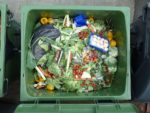Ways to Make Your Daily Routine Eco-Friendly

If you sit down and think about it, we live in somewhat crazy times. We cause irreversible damage to our environment, while being eco-friendly has never been easier. In fact, we are going to give you a couple of ways to make your daily routine eco-friendly just to show you how easy it really is. And, with any luck, some of you will implement these little changes and make our environment that much better. Easy ways to make your daily routine eco-friendly The great thing about the ways in which you can make your daily routine eco-friendly is that they …











